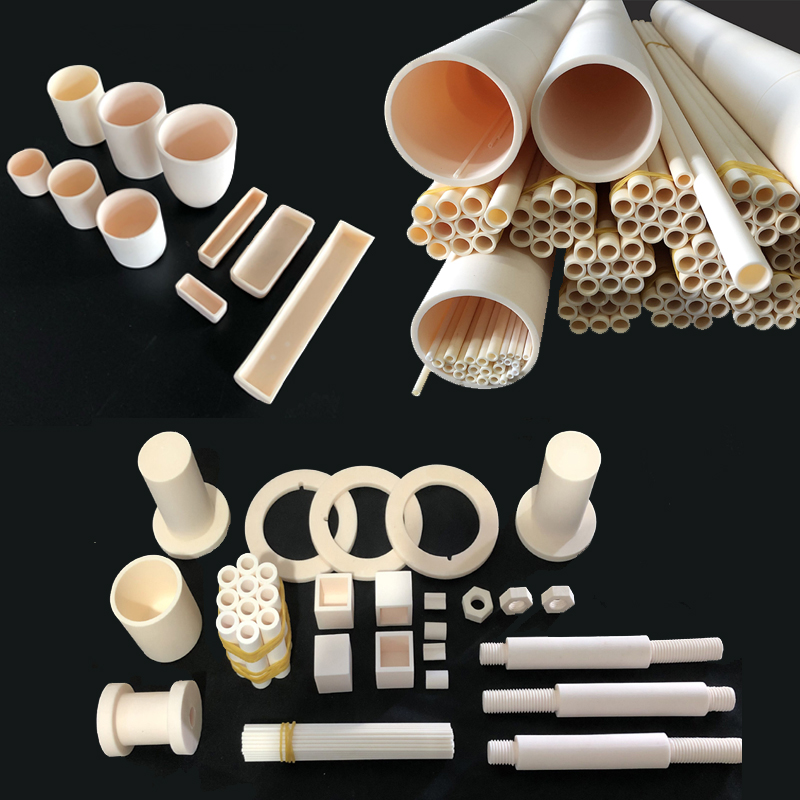How to distinguish the application scope of different purity alumina ceramics

In the current context of the rapid development of modern industry and technology, ceramic materials play a crucial role in numerous fields due to their unique properties. Among them, alumina ceramics are highly favored by customers because of their characteristics such as high hardness, high strength, high insulation, and good chemical stability. However, there are differences in the purity of alumina ceramics, and products with different purities also have different application scopes, which has become a key point that customers pay great attention to when making purchases.
Generally speaking, alumina ceramics can be divided into different grades according to purity, such as 95%, 99%, and 99.9%. The level of purity directly affects the performance of the ceramics, and in turn determines their applicable scenarios.
For alumina ceramics with a purity of 95%, due to their high cost-effectiveness, they are widely used in many fields. In the electronics field, it is often used to make the insulating substrates of electronic components. These substrates require the material to have certain insulating properties and mechanical strength, and alumina ceramics with a 95% purity can precisely meet these requirements. At the same time, its relatively low cost can effectively control the overall cost of the product. In the textile industry, alumina ceramics of this purity can be used to manufacture the yarn guides of textile machinery. The yarn guide needs to withstand the friction of the yarn during operation, and the high hardness of the 95% purity alumina ceramics enables it to effectively resist wear, extend the service life of the yarn guide, and ensure the efficient and stable operation of textile production.
The performance of aluminum oxide ceramics with a purity of 99% has been further improved compared to products with a 95% purity. In the aerospace field, some components have strict requirements for the lightweight and high strength of the material. Aluminum oxide ceramics with a 99% purity, relying on their relatively high strength and light weight, have become an ideal choice for manufacturing some small structural components. For example, in the manufacturing of some instrument components of satellites, using aluminum oxide ceramics of this purity can not only ensure the structural stability of the components in the complex space environment but also help reduce the overall weight of the satellite and lower the launch cost. In the field of precision optical instruments, aluminum oxide ceramics with a 99% purity can be used to make the bases of optical lenses. Its good thermal stability and dimensional stability can ensure that the position and optical performance of the lens are not affected when environmental factors such as temperature change, providing high-precision support for optical instruments.
High-purity aluminum oxide ceramics with a purity of 99.3% and 99.9% have even more outstanding performance and are mainly applied to high-end fields with extremely high requirements for materials. In the semiconductor manufacturing industry, high-purity aluminum oxide ceramics can be used to make wafer carriers. The semiconductor manufacturing process has almost stringent requirements for the cleanliness of the environment and the purity of the material. Aluminum oxide ceramics with a purity of 99.3% and above have extremely low impurity content, which can effectively avoid the contamination of the wafers. At the same time, their excellent flatness and high-precision processing performance can ensure the precise positioning and transmission of the wafers during the production process, guaranteeing the high-quality production of semiconductor chips. In the medical field, these high-purity aluminum oxide ceramics can be used to manufacture implants such as artificial joints. Due to their good biocompatibility and extremely high wear resistance, after being implanted into the human body, they can remain stable during long-term use, reduce the irritation of wear debris to human tissues, and improve the quality of life of patients.
When choosing alumina ceramics products, customers need to fully consider their own actual needs. If it is for general industrial applications and is sensitive to costs, aluminum oxide ceramics with a 95% purity are usually a more suitable choice; if the application scenarios have high requirements for product performance, such as in the aerospace, precision optics, and other fields, products with a 99% purity should be given priority; and for high-tech fields such as semiconductor manufacturing and medicine, high-purity alumina ceramics with a purity of 99.3% and 99.9% can meet the stringent quality standards. Only by accurately distinguishing the application scopes of aluminum oxide ceramics with different purities can customers purchase products that best meet their own needs, so as to fully utilize the advantages of alumina ceramics in their respective industries and improve product quality and production efficiency.

